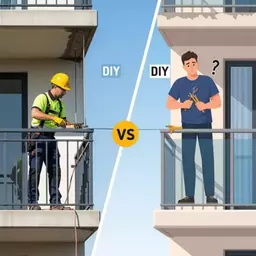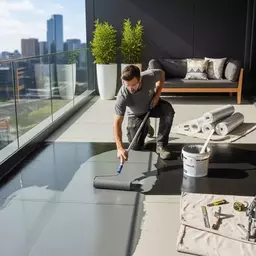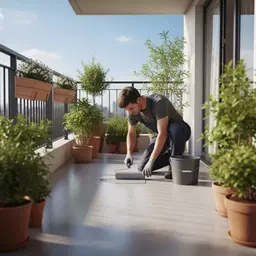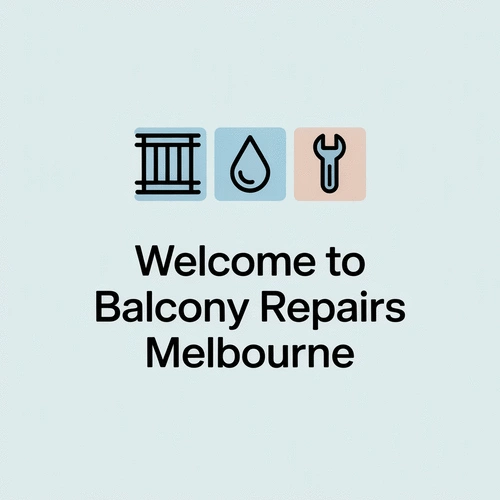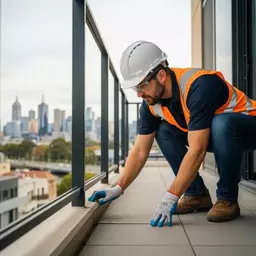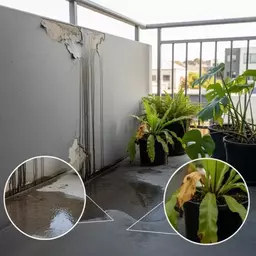Have you ever wondered how a small leak can lead to big problems? Understanding balcony leaks is essential for homeowners, as they can cause significant damage if not addressed early. Let’s explore the key insights to help you maintain a safe and beautiful outdoor space.
What You Will Learn
- Common causes of balcony leaks include poor waterproofing, drainage issues, and structural cracks.
- Signs of a leaking balcony to watch for are water stains, pooled water, and peeling paint or wallpaper.
- Implementing leak detection technologies can help identify problems early and save money on repairs.
- Immediate actions for emergency waterproofing include conducting a thorough inspection and using sealants for quick fixes.
Key Aspects of Balcony Leaks and Their Management
Understanding the causes, signs, and necessary actions for balcony leaks is essential for property maintenance. This visual outlines the critical steps from identification to repair. For more comprehensive information on identifying problems, consider our guide on how to spot balcony leaks in homes.
Common Causes of Leaks
- Poor Waterproofing
- Drainage Problems
- Structural Cracks
Signs of a Leaking Balcony
- Water Stains
- Pooled Water
- Peeling Paint or Wallpaper
Benefits of Leak Detection
- Early Detection
- Cost Efficiency
- Peace of Mind
Emergency Repair Steps
- Initial Inspection
- Emergency Quick Fixes
- Waterproofing Options (long-term)
Understanding Balcony Leaks: Causes and Signs
As someone who has spent over a decade in the balcony restoration industry, I can tell you that understanding balcony leaks is crucial for homeowners and property managers alike. Leaks can lead to significant structural damage if not addressed promptly. So, let’s dive into the common causes and signs of these pesky leaks!
Identifying Common Causes of Balcony Leaks
There are a number of factors that can contribute to balcony leaks. Here are some common culprits:
- Poor Waterproofing: If your balcony wasn’t waterproofed correctly during construction, it’s likely to develop leaks over time.
- Drainage Problems: Inadequate drainage can cause water to pool, leading to damage and leaks.
- Structural Cracks: Over time, natural wear and tear can result in cracks that allow water to seep through.
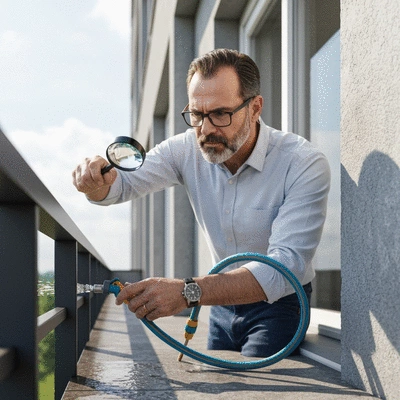
Paying attention to these issues early on can save you time and money in the long run. It's important to regularly inspect your balcony to catch any potential problems before they escalate. For tips on how to keep your outdoor spaces in top condition, check out our balcony care tips for homeowners.
Recognizing the Signs of a Leaking Balcony
Detecting leaks early can prevent further damage. Here are some signs that your balcony might be leaking:
- Water Stains: Look for discoloration on walls or ceilings beneath the balcony.
- Pooled Water: Noticeable pooling on the balcony surface after rain is a red flag.
- Peeling Paint or Wallpaper: This can indicate moisture buildup in the walls.
By keeping an eye out for these indicators, you can tackle any issues before they lead to costly repairs!
The Role of Leak Detection in Preventive Maintenance
Utilizing leak detection technologies can significantly reduce the risk of extensive damage to your balcony. These modern methods allow for pinpointing leaks without invasive measures. Here are some benefits of implementing leak detection:
- Early Detection: Catching leaks in their infancy can prevent more serious structural issues.
- Cost Efficiency: By identifying problems early, you can avoid expensive emergency repairs down the line.
- Peace of Mind: Knowing your balcony is secure allows you to enjoy your outdoor space without worries!
Incorporating leak detection into your regular maintenance schedule is a smart move for any homeowner. It keeps your balcony safe and extends its lifespan!
Immediate Actions for Emergency Waterproofing Repairs
Sometimes, despite our best efforts, we find ourselves facing a leaking balcony. Don’t panic! There are immediate actions you can take to minimize damage while you wait for professional help.
Pro Tip
To maintain your balcony's integrity, consider scheduling regular inspections at least twice a year. This proactive measure allows you to catch any early signs of leaks or damage before they escalate into costly repairs. Pair this with the use of high-quality waterproofing materials during maintenance to ensure lasting protection against the elements!
Frequently Asked Questions About Balcony Leaks
What are the most common causes of balcony leaks?
The most common causes include poor waterproofing during construction, inadequate drainage leading to water pooling, and structural cracks that develop due to wear and tear over time.
How can I tell if my balcony is leaking?
Key signs of a leaking balcony include water stains on walls or ceilings below the balcony, noticeable pooled water on the balcony surface after rain, and peeling paint or wallpaper indoors, indicating moisture buildup.
What are the benefits of using leak detection technologies?
Leak detection technologies offer several benefits, such as early detection of leaks before they become major issues, cost efficiency by avoiding expensive emergency repairs, and providing peace of mind by ensuring your balcony is secure.
What immediate actions should I take if I discover a balcony leak?
Upon discovering a leak, you should conduct an initial inspection to pinpoint visible signs, apply emergency quick fixes like sealants or waterproof tapes to minimize immediate damage, and then plan for more permanent waterproofing options.
How often should I inspect my balcony to prevent leaks?
It is recommended to schedule regular inspections of your balcony at least twice a year. This proactive approach helps in catching any early signs of leaks or damage before they escalate into costly repairs.
Summarizing Emergency Waterproofing Repairs for Balcony Leaks
As we've navigated the crucial aspects of managing balcony leaks, it’s clear that timely action is essential. We covered the importance of identifying leak sources, assessing damage, and implementing emergency repairs to prevent further complications. Let’s recap the key points that can help you handle a leaking balcony effectively:
- Initial Inspection: Start with a thorough assessment to pinpoint visible signs of leaks.
- Emergency Quick Fixes: Use sealants or waterproof tapes as immediate solutions.
- Waterproofing Options: Familiarize yourself with materials like liquid-applied membranes or sheet membranes for long-term solutions.
By understanding these fundamentals, you can take decisive actions that not only protect your investment but also enhance the safety and enjoyment of your outdoor space. For detailed information on long-term solutions, refer to our article on waterproofing solutions for Melbourne balconies.
Taking Action: Next Steps for Homeowners
Now that you have a clearer picture of how to manage emergency waterproofing repairs, I encourage you to assess your own balcony. Are there any signs of wear or potential leaks? Remember, the sooner you address these issues, the less likely they are to escalate. Whether it's scheduling a professional inspection or attempting some DIY fixes, being proactive is key!

At Balcony Repairs Melbourne, we’re dedicated to empowering homeowners like you with the knowledge and resources needed for effective balcony maintenance. Don’t hesitate to reach out if you have questions or need expert assistance. Together, we can ensure that your balcony remains a beautiful, safe haven for years to come!
Recap of Key Points
Here is a quick recap of the important points discussed in the article:
- Common Causes of Balcony Leaks: Poor waterproofing, drainage problems, and structural cracks are key contributors.
- Signs of a Leaking Balcony: Look for water stains, pooled water, and peeling paint as indicators of leaks.
- Importance of Leak Detection: Utilizing leak detection technologies enables early identification and can save costs on repairs.
- Immediate Actions for Leaks: Conduct an initial inspection and apply emergency quick fixes like sealants while waiting for professional help.
- Proactive Maintenance: Regular inspections and addressing wear and tear promptly can prevent significant damage.


